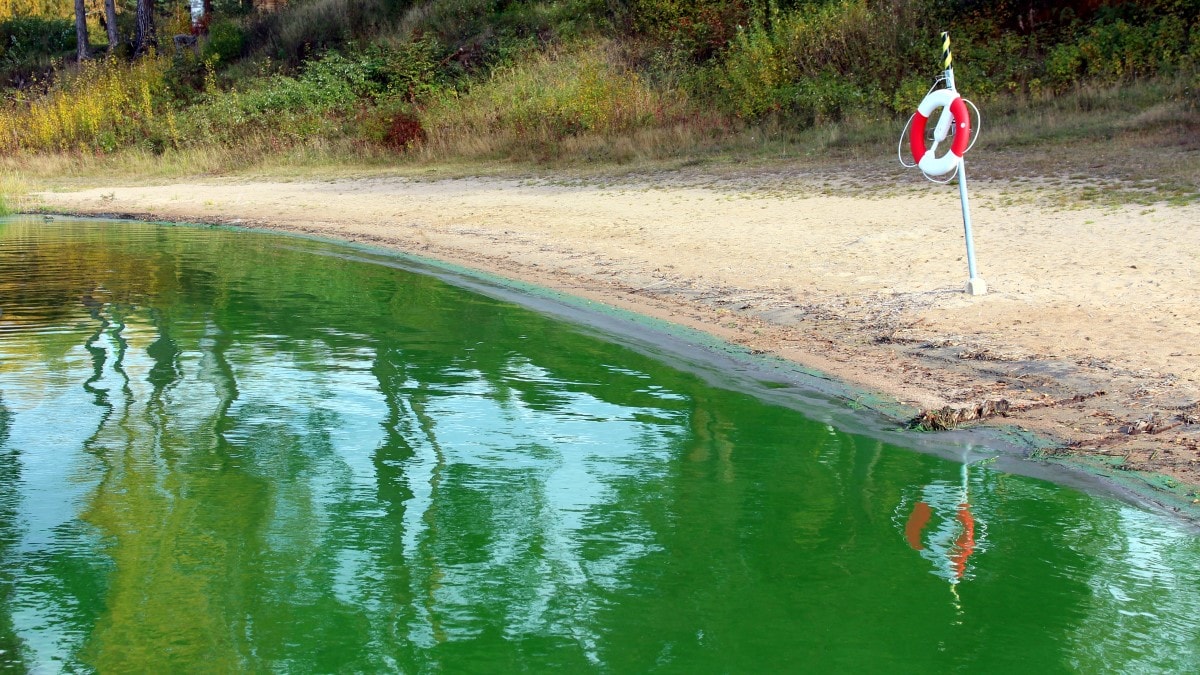Key points
- Cyanobacteria, also called blue-green algae, can produce toxins (poisons) that make people and animals sick.
- Touching water, breathing in tiny water droplets, or swallowing water or food containing these toxins can cause symptoms.
- Symptoms can be mild to serious depending on the amount and type of toxin.

Signs and symptoms
In fresh water, such as lakes and rivers, harmful algal blooms are most commonly caused by cyanobacteria. Blue-green algae is another name for cyanobacteria.
Going in or near water that contains toxins made by cyanobacteria can make you sick. Getting water on your skin or breathing in tiny droplets of water from a harmful algal bloom can cause:
- Rash
- Eye irritation
- Nose irritation
- Sore throat
- Cough
You can also get sick by swallowing water, fish, shellfish, or dietary supplements containing toxins made by cyanobacteria. Swallowing these toxins can cause:
- Stomach pain
- Vomiting
- Diarrhea
- Headache
- Muscle weakness
- Dizziness
- Liver damage
Find out more about how you might come in contact with toxins made by cyanobacteria.
If you think a harmful algal bloom made you sick, contact a healthcare provider or the Poison Control hotline at 1-800-222-1222. They can give you advice about how to feel better.

Later symptoms
The long-term health effects of harmful algal blooms for people and animals remain unclear. Researchers are still learning about these effects.
BMAA
BMAA (Beta-N-methylamino-L-alanine) is a compound made by cyanobacteria. Some research with animals has shown a link between BMAA and harmful effects on the brain. This has raised concern that BMAA could contribute to diseases that affect the brain and nervous systems of animals and humans. More research is needed to better understand the effects of BMAA on brain health, but a 2017 review by the U.S. Environmental Protection Agency concluded that current data do not show that BMAA causes brain disease in humans.
Signs and symptoms in animals
Mammals and birds
Swallowing toxins made by cyanobacteria can poison birds and mammals, including dogs, livestock, and wildlife.
Animals can swallow toxins by swimming in or drinking water with a harmful algal bloom. They can also get sick by eating algae, fish, or other animals containing the toxins. Learn more about how animals might come into contact with harmful algal bloom toxins.
Signs of illness in animals include:
- Vomiting
- Loss of energy
- Staggered walking
- Excessive drooling
- Difficulty breathing
- Tremors and seizures
Harmful algal blooms can be deadly for animals
Fish
Harmful algal blooms and their toxins can harm fish and other animals that live in water in several ways.
The toxins can directly kill animals.
When cyanobacteria in a harmful algal bloom die and start decaying, they can use up the oxygen in water. When this happens, fish and other animals that live in water may not have enough oxygen to breathe and may die.
Large amounts of cyanobacteria in the water can also make it difficult for animals with gills to breathe.
